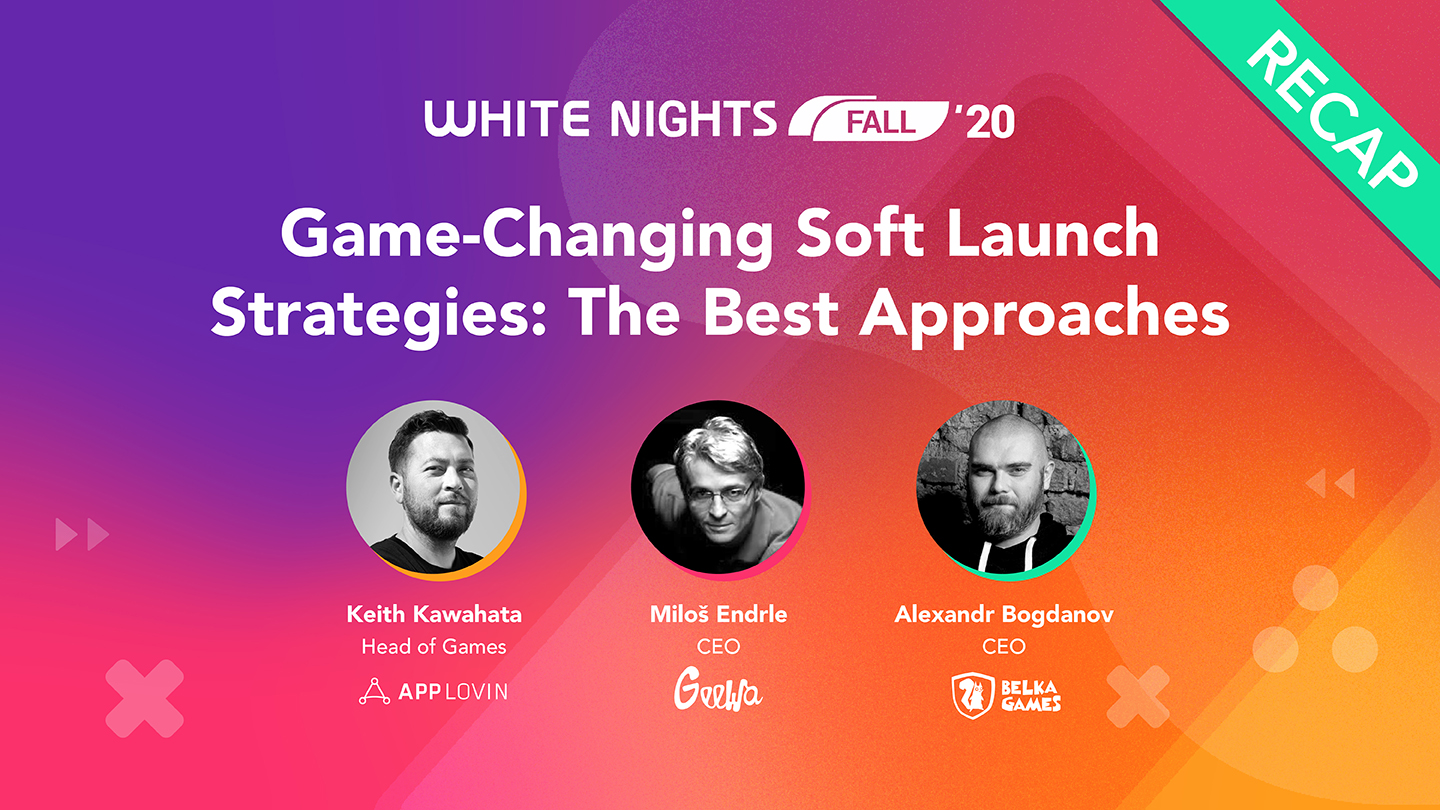Mobile App Growth
Game-Changing Soft Launch Strategies: The Best Approaches
Nov 20, 2020

Mobile App Growth

You’ve spent months creating your game and now it’s ready for soft launch. Do you know what data to track and why? What is your soft launch strategy?
I recently had an in-depth conversation about this topic with CEO of Belka Games, Alexandr Bogdanov, and CEO at Geewa Games, Milos Endrle at this year’s White Night’s Conference. We spoke in-depth about the methods they use to quickly develop, test, and make crucial decisions about games during the soft launch stage.
We also talked through which KPIs their studios focus on and how to know if your game is ready for a global launch. Alexandr and Milos gave specific examples about their most successful titles and how these strategies helped scale their games.
Let’s back up and briefly touch upon what a soft launch phase is. For every game studio, the definition of a soft launch and the processes that are implemented (i.e., testing, KPIs, metrics) are different.
Generally speaking, a soft launch is the phase when you want to gather as much information as possible so you know what next steps to take with your game. For example, if your game doesn’t hit certain requirements, you can then choose to kill the game and move on, or decide you want to grow and ultimately scale it.
Both Alexandr and Milos said their studios are involved in a number of “tech launches” prior to what we would traditionally call “soft launch”. In other words, the soft launch would be considered the final phase.
During Belka’s soft launch, Alexandr stressed the importance of speed, saying, “We don’t want to waste money. The soft launch phase helps us to think about how we can properly scale and if players are engaged.”
Milos explained Geewa’s process, saying, “A soft launch helps us measure KPIs. We look at day one retention numbers and make sure everything is working on the client-side. For example, PvP is very important. When we are ready from a technical perspective, we test core games.” He added that he invites friends, colleagues, and family members to play and give feedback on their game—which is always a great idea!
The first few days after launching is a critical time and an important KPI (key performance indicator) to measure is engagement.
Geewa Studios looks at the number of matches people are playing on the first and second days after launching their titles. Milos added, “We also look at the onboarding funnel and assess whether the tutorial is good and what steps can be taken to improve it.”
After that, Milos said his team further analyzes the data and based on specific benchmarks, makes crucial decisions about the next steps. “Our milestone for retention is about 40 percent. Days three to seven are also important—if we achieve our goals during these days, we move on to examining monetization.”
Metrics and engagement
Similar to Geewa, Alexandr said his team mostly focuses on product metrics and engagement. “We measure open rates and the first length of the game session.”
The data that Belka gathers during this time is also used to establish predictions and helps them understand what days seven or 40 will look like, for example. Alexandr pointed out, “This is enough for us to make a decision, as in—should we change the core gameplay or should we move on to the next phase?”
When it comes to figuring out how well their games will monetize, both CEOs said they aim to understand scalability and CPI (cost per install). One factor affects the other—for example, you could have great engagement and solid monetization, but sometimes it won’t make sense to scale because the price of users are simply too high.
Belka can make a game in three to four months, and within that time, Alexandr’s team comes up with new ideas and concepts. However, if the data doesn’t meet their expectations, they end up pulling the plug on it. In the case of test phase passing, Solitaire Cruise as a recent example, “it reached our expected metrics, and it became a success.”
Alexandr added, “Your game’s DNA will determine if it’ll be successful.”
Testing a game’s marketability is also important. Milos said his team “tests different types of art, the style of the heroes, and even names for the title of the game.”
For their hit game, Smashing Four, Milos revealed that they actually tested four different names for the title by looking at the click through rate. “Smashing Four was born from this idea of testing, and now we’re implementing this idea in more of our games.”
Alexandr said their studio identified who their core audience was, saying, “We wanted to understand our early core game players and what their engagement was. What were they interested in? What were their genders, age, etc? Then we changed things like graphics and even the name of our games. Solitaire Cruise evolved after learning more about the core audience and was completely changed, twice.”
Both studios have partnered with AppLovin to grow and successfully scale their businesses. For Geewa, the partnership really helped improve the bigger picture and created more of a stable environment.
Milos smiled, “It’s a great pleasure to be a part of the family, both from a business and personal standpoint. The partnership has helped us focus on what we need to improve.”
Alexandr agreed, adding, “The partnership with AppLovin has made Belka stronger. We’re more confident to take risks, do more research, and scale faster.”
Learn more about AppLovin’s partner studios.